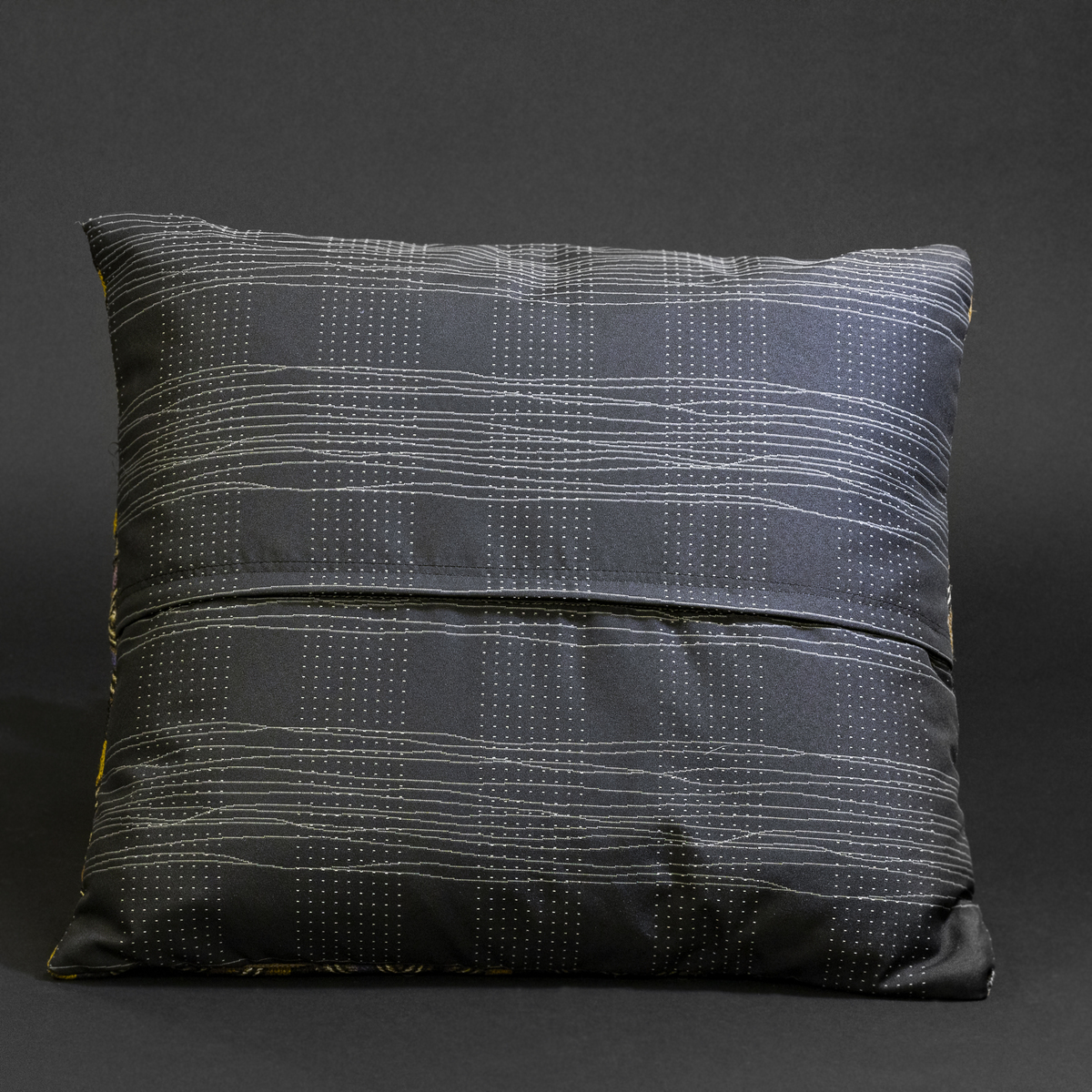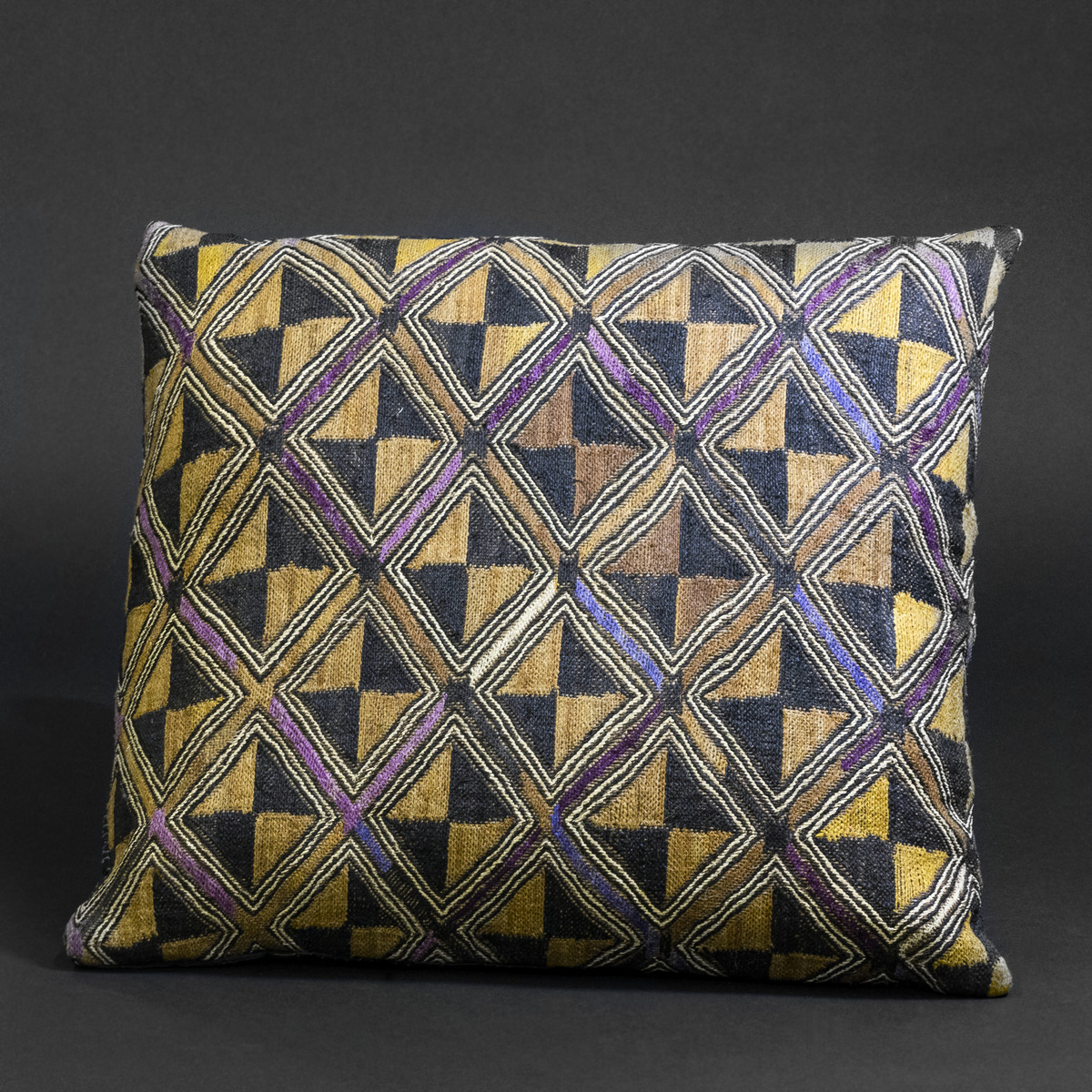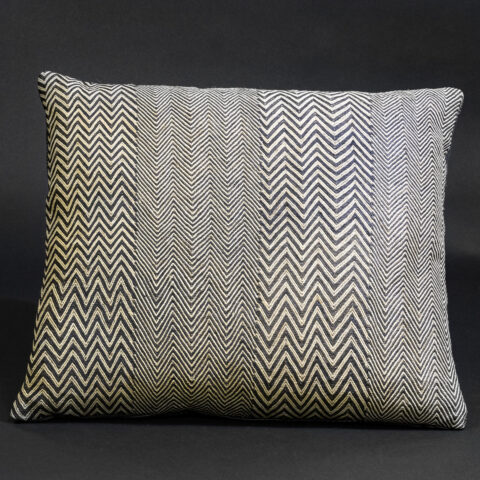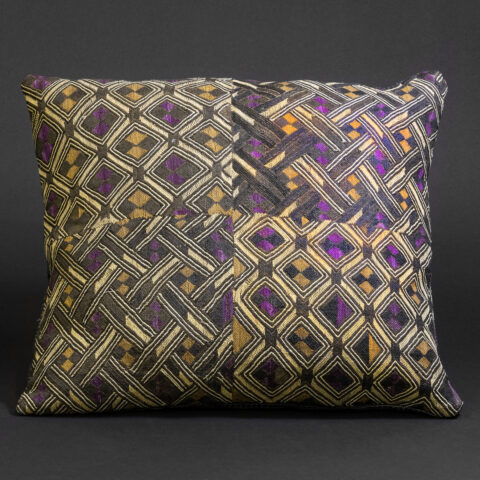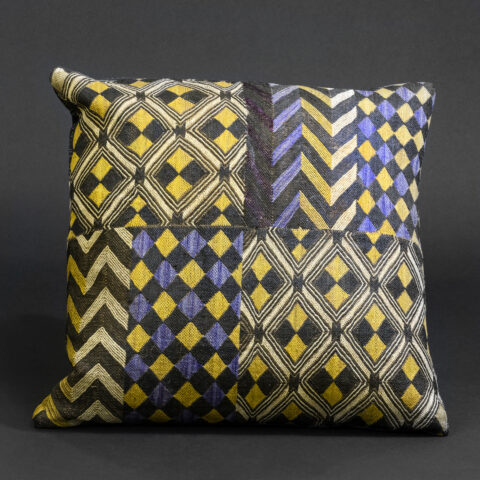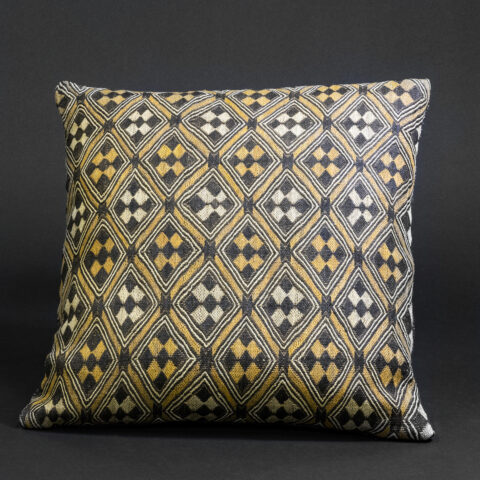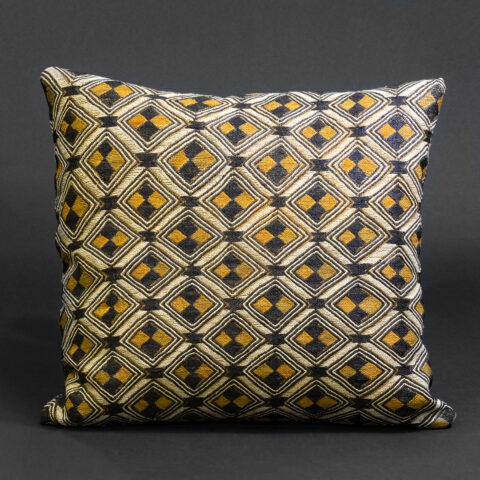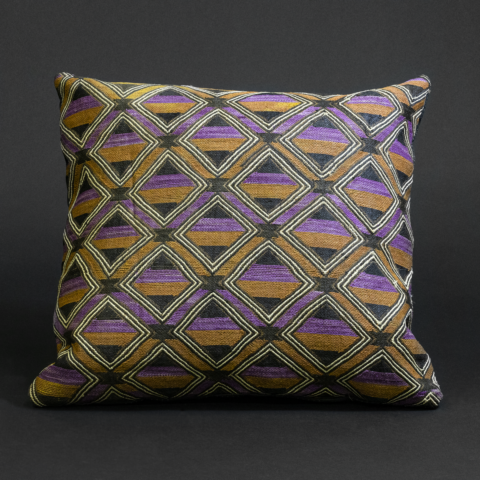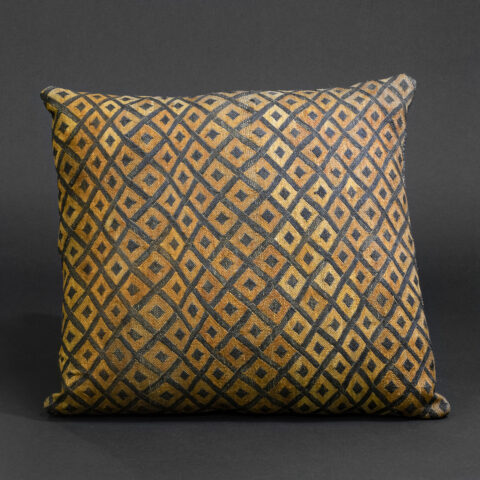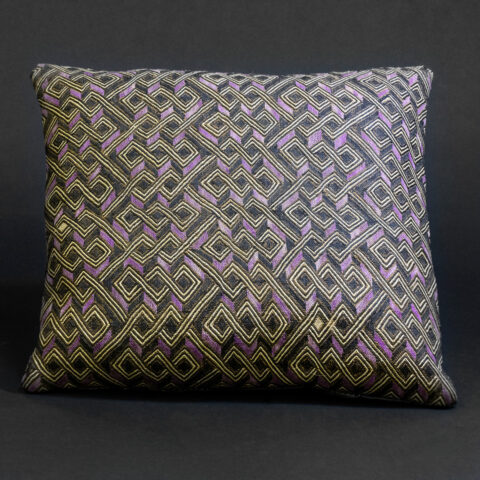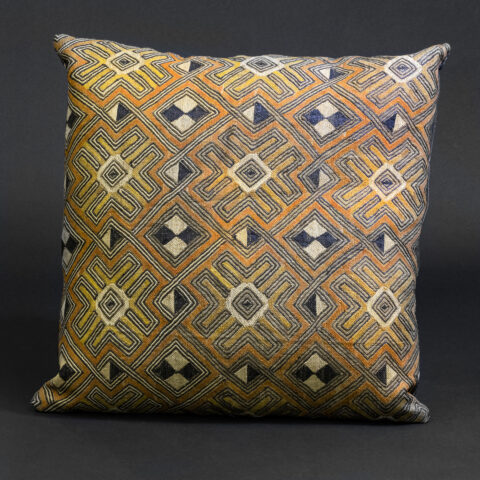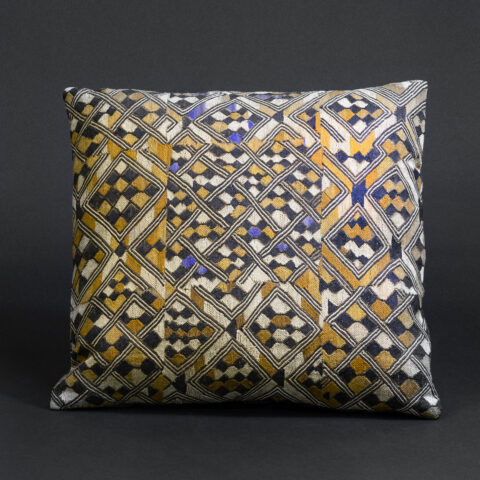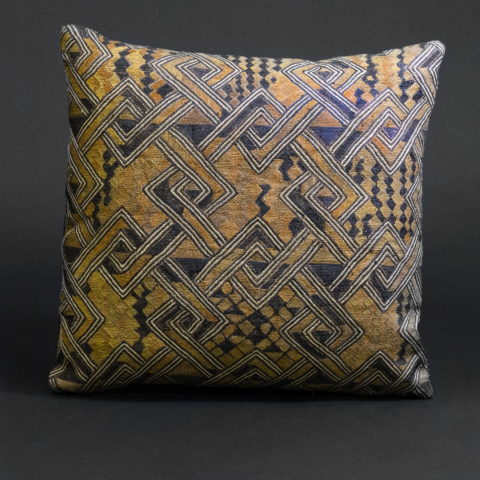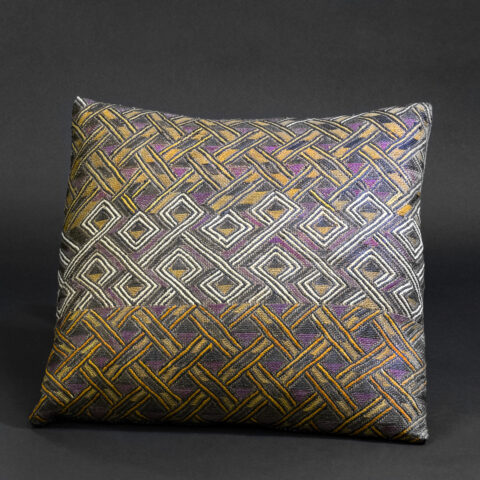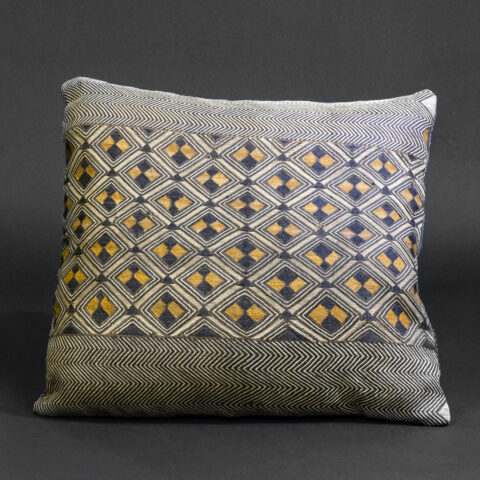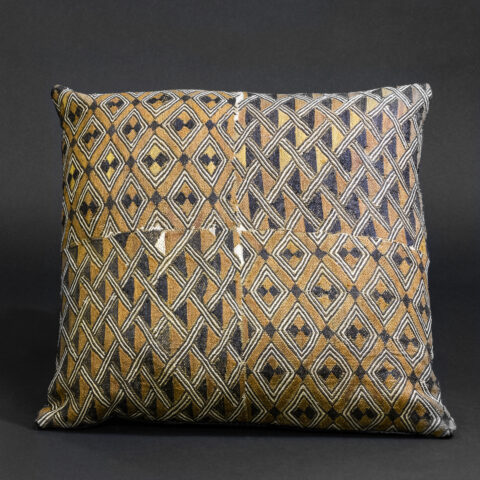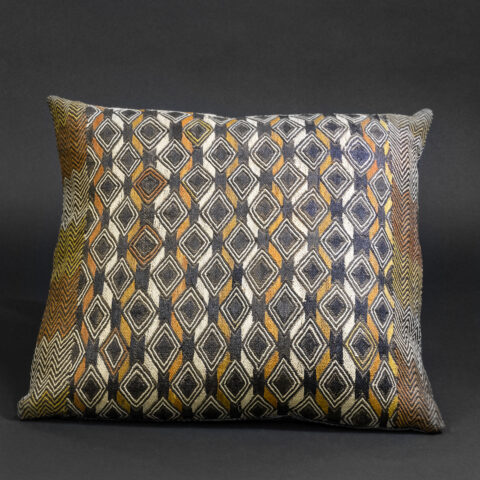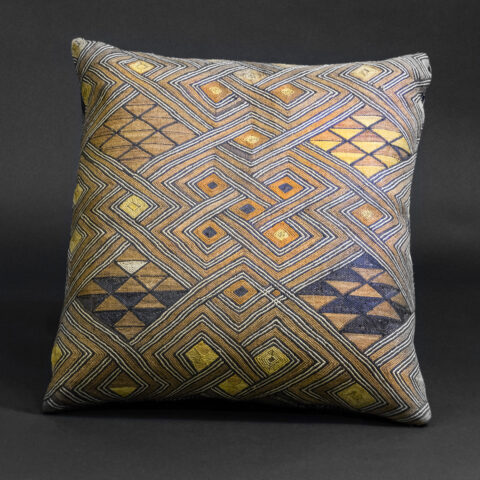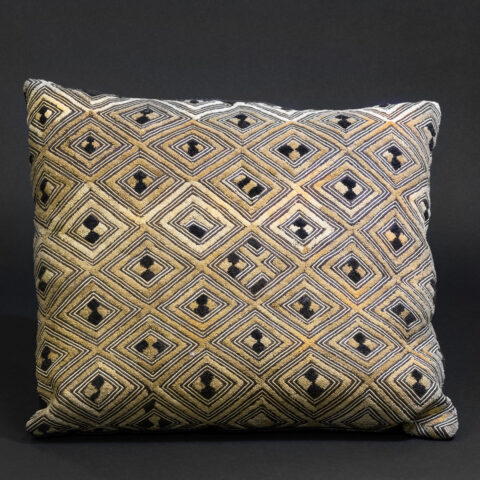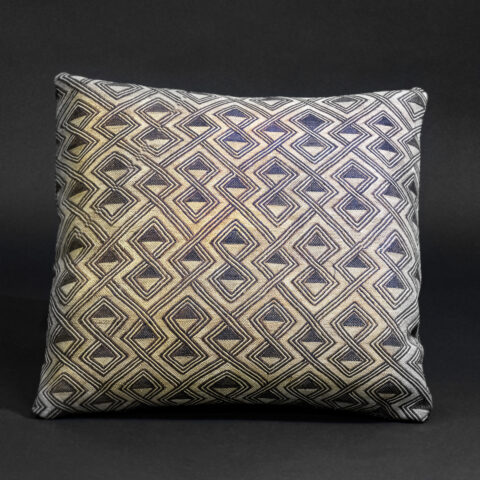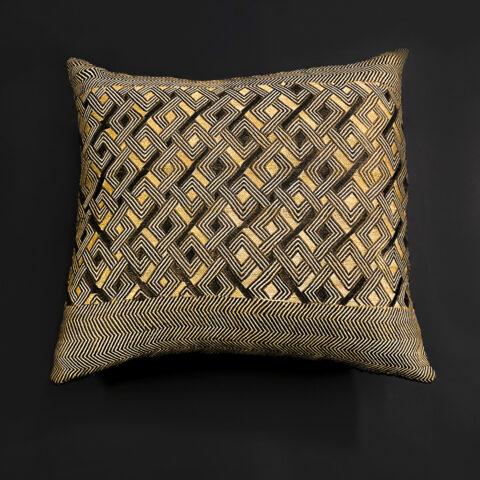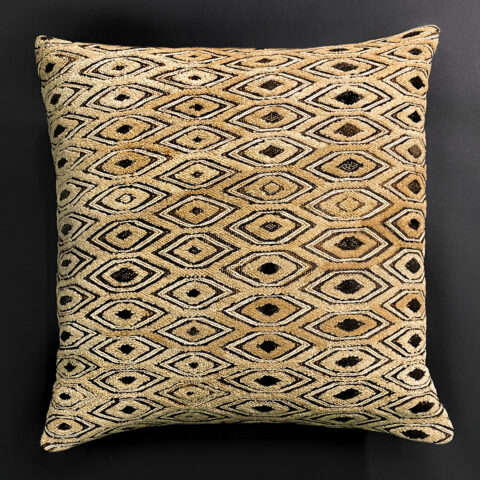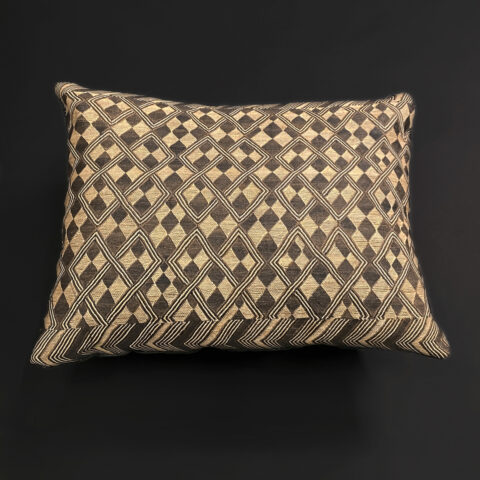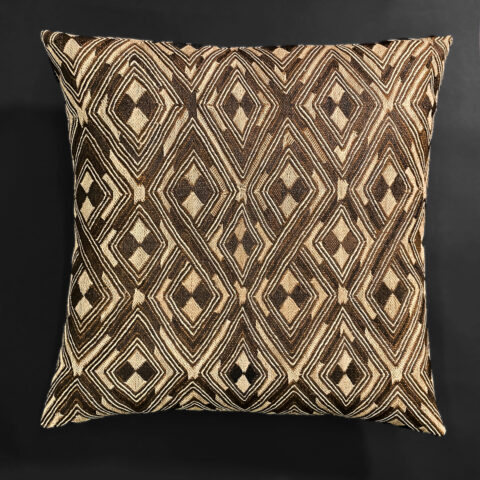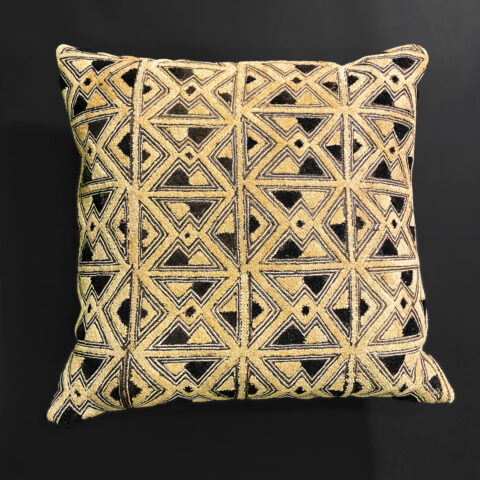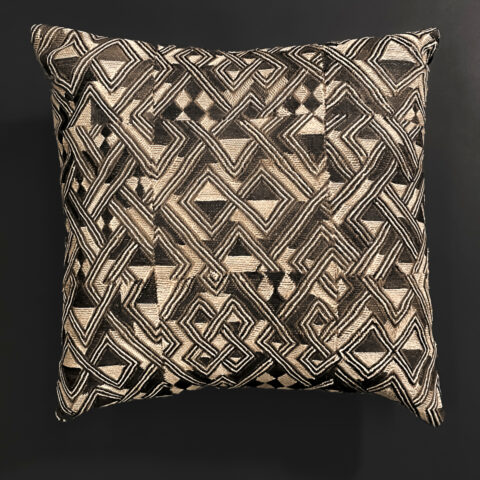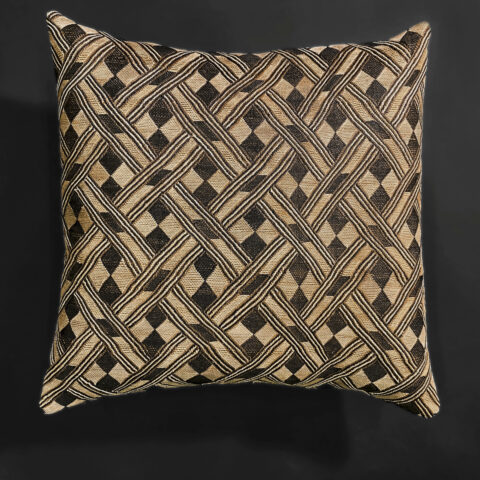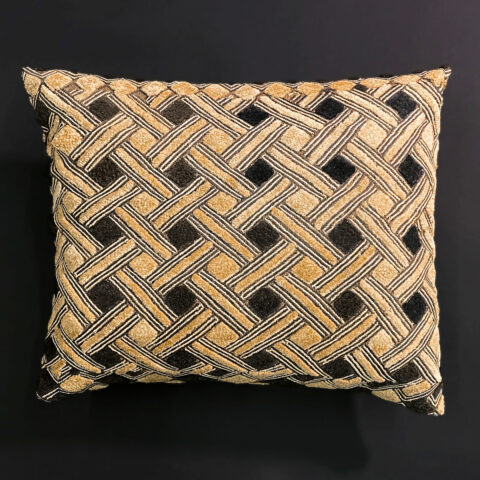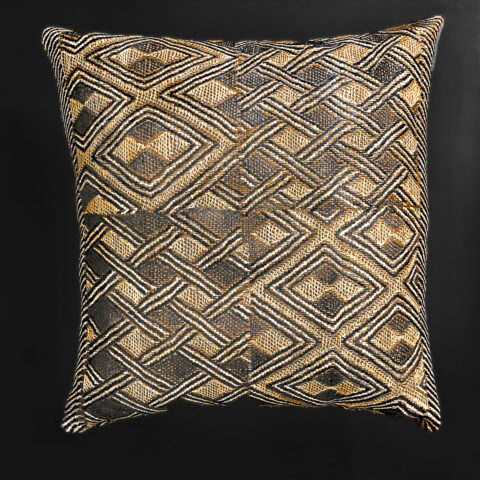Description
A radiant expression of mathematical abstraction and cultural symbolism, the “Twilight Geometry” Raffia Pillow features a mesmerizing diamond grid composed of quarter-turn motifs—each square a perfectly balanced arrangement of angles, light, and heritage. Handwoven and embroidered by the Kuba people of the Democratic Republic of Congo, this design showcases the precision and spiritual complexity that define Kuba textile traditions.
The design is anchored by nested diamonds, each enclosing a four-part rotational symbol—often referred to in Kuba iconography as a rotational cross or compass motif. These elements, with their pinwheel-like energy, evoke cosmological maps and spiritual forces that center the human experience within the cycles of time, nature, and the ancestral world. This repetition of geometry speaks to harmony through movement, and knowledge through form—central tenets of the Kuba visual philosophy.
The pillow’s palette—a sophisticated interweaving of golden ochre, ivory, espresso brown, and deep indigo, punctuated by rare violet-purple—reflects both ceremonial gravitas and artistic innovation. These colors are derived from natural roots, clay, and fermented vegetal dyes, applied with mastery by Kuba women whose embroidery practices are passed down matrilineally.
Traditionally, such motifs were reserved for ceremonial wrappers (ntshak) worn by nobility, or cloths used during funerals and initiations. Each square within the design could symbolize an individual within a lineage, a moment in time, or a blessing from the spirit realm. The Kuba worldview finds balance not through symmetry alone, but through rhythm, contradiction, and intentional asymmetry—a visual philosophy that permeates this work.
Transformed by NOA Living into a refined accent pillow, “Twilight Geometry” becomes both an object of comfort and a vessel of culture. Its geometric clarity and luminous tones make it an ideal centerpiece for curated interiors, from minimalist lofts to globally layered spaces. It is not only a textile—it is a conversation with legacy, design, and the universal language of pattern.


